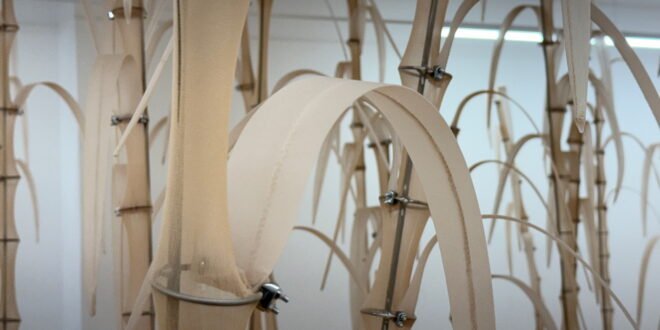At the core of identity in the United States is forgetting. The process of assimilation tells immigrants that the path of least resistance is to smooth their differences into imperial classifications.
“Like an invisible disease, assimilation is at its best when it is undetectable,” writes Anne Anlin Cheng in her recent memoir Ordinary Disasters: How I Stopped Being a Model Minority (Random House, 2024). “The sociologist Erving Goffman calls assimilation covering, the idea that you downplay or cover over your differences to match mainstream culture or expectation. Assimilation is not passing, it is more of a shell game. The good assimilationist, like the good girl, puts on a good face, makes herself a little smaller for the ease of others, does whatever is necessary to maintain the smooth surface of sociology. It’s not because things are easier when you give in or simply because you want to please, it’s because what’s on the other side of that civility is a violence so quotidian and profound that your very survival is at stake.”

That idea of covering, or even uncovering, which could denote the opposite, is at the heart of Serena Chang’s current exhibition, Sweet Water, at Island Gallery, exploring her father’s memories of working in a pantyhose factory in Taiwan. His recollections of his youth on the island nation are rendered in the form of drawings of sugar cane and videos of a factory, often superimposed on one another. At the center of this display is the exhibition’s namesake artwork, a sugarcane ghost forest composed of 60 stalks that stretch sheer nude hosiery across plastic and steel rod armatures. The suggestion of a field evokes the memory of a historical time and place, utilizing a product that was once ubiquitous for working women as a way to conform to corporate standards, encouraging them to cover up for propriety’s sake.
Pantyhose are no longer required for most dress codes, particularly in North America, as fashions for the delicate leggings have either been fully rejected or tastes have changed to incorporate more opaque materials. At the base of each of these ghostly forms are fragments from the Chinese characters “you,” “me,” and “us.” The word for “us,” 我們, in pinyin is spelled Wǒmen, and that too is incorporated, as the artist plays with language and its translation, something that undergirds assimilationist anxieties, as we often walk a line that renders us, as immigrants, at once alien and/or familiar.

Smaller items displayed on the walls include packaging forms covered densely with images of hosiery that transform them into a type of camouflage, masking their utilitarian nature. Chang’s father’s drawing of a sugarcane forest turns the hint of a memory into yet another pattern, and all around we hear audio that suggests an additional type of pattern recognition, as insect and factory sounds blend. Aural covering is yet another example of conformity, as we hide our linguistic rhythms and tones, as well as our geographic journeys, to prove to others we’re not like them, whoever they may be.
Listening to stories and making sense of parents’ memories are obsessions of immigrant children in settler colonial societies. Perhaps this reminds us why we’re here, what we lost to make the journey, how we fit in or don’t. Most of all, it anchors us in a society that does its utmost to forget what came before. The grass is often greener back there, and the water is probably sweeter, too.
Serena Chang: Sweet Water continues at Island Gallery (83 Bowery, Lower East Side, Manhattan) through February 15. The exhibition was organized by the gallery.
Source link

